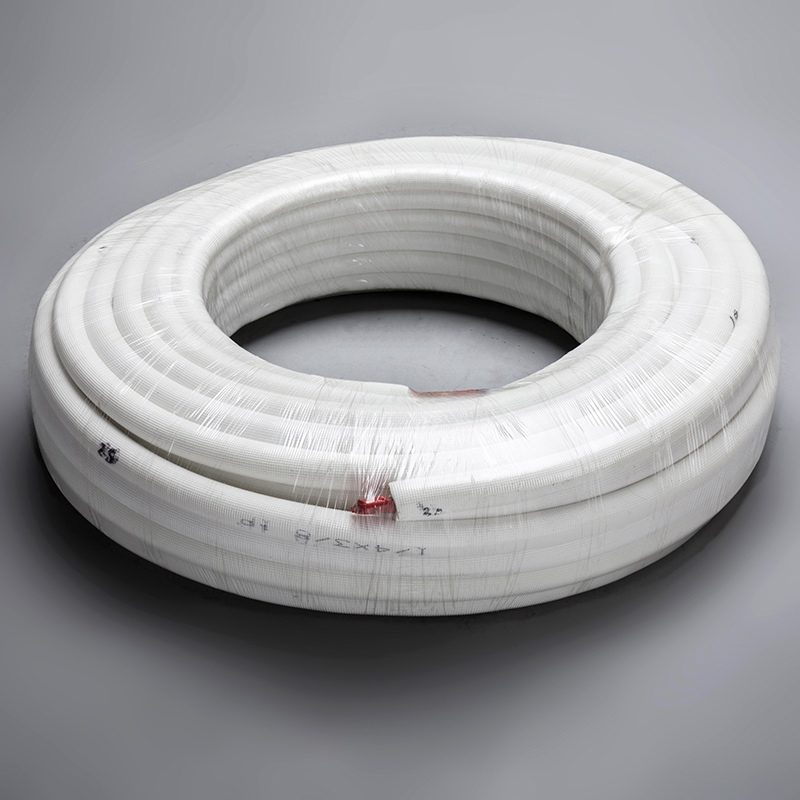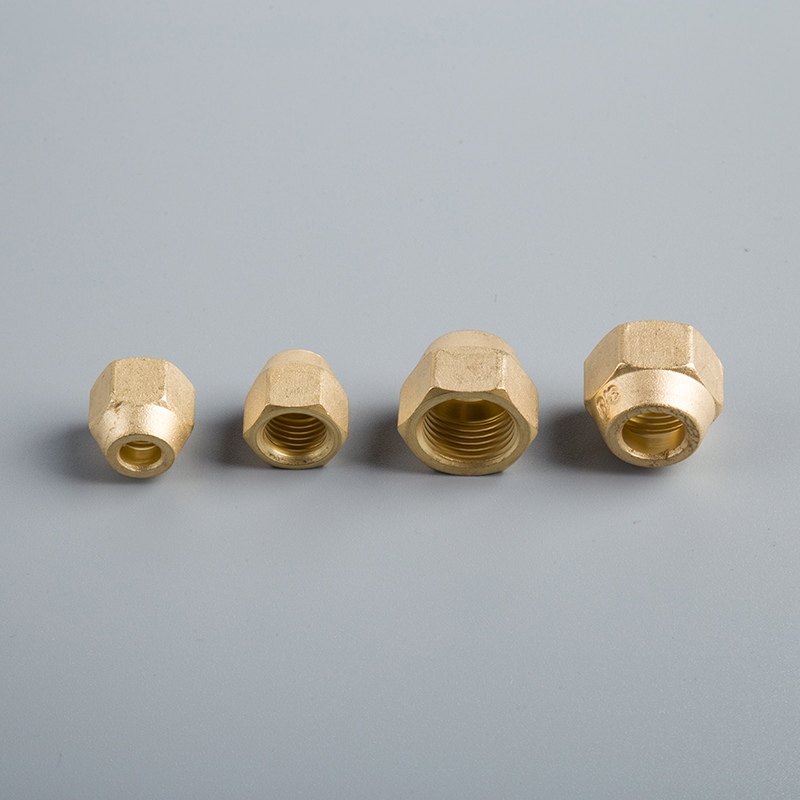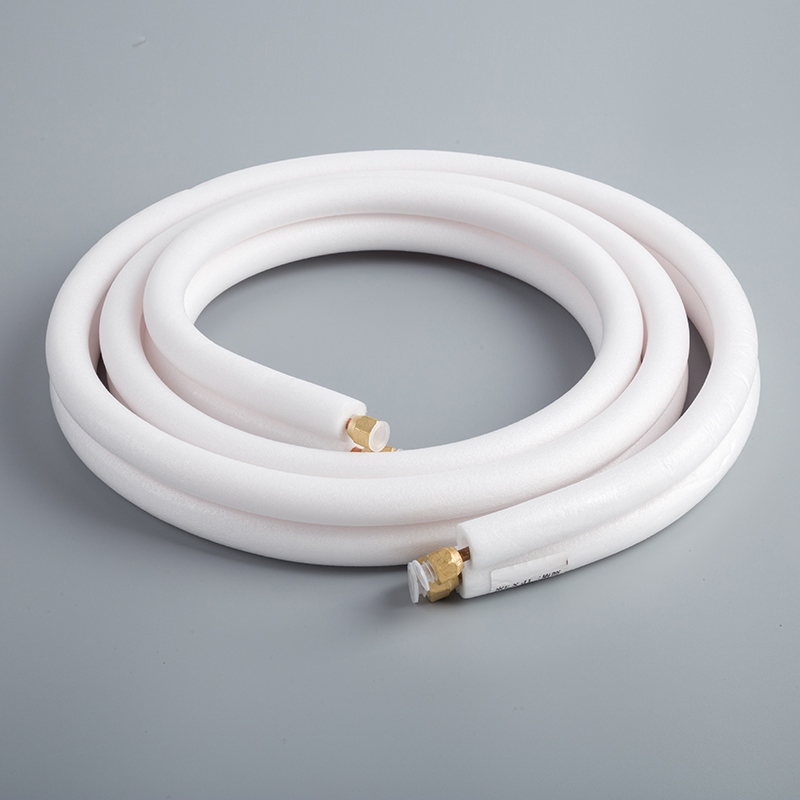Top Tips for Choosing Air Conditioning Copper Pipes

Selecting the right copper pipes for air conditioning systems is crucial for optimal performance and longevity. This blog will delve into essential Tips for Selecting Air Conditioning Copper Pipes to guide you through the decision-making process. Copper pipes offer numerous advantages, including excellent corrosion resistance and lasting connections that can endure up to 70 years without leaking harmful chemicals into your water supply. Understanding these benefits is key to making informed choices when it comes to your air conditioning system.
Understanding Copper Pipes

When it comes to Types of Copper Pipes, there are several variations that cater to different needs within the construction industry. Each type offers unique characteristics that make them suitable for specific applications.
Type K Copper Pipes
Type K Copper Pipe stands out with its thickest wall among common types, making it ideal for various purposes such as water distribution, fire protection, oil, and HVAC systems. This type is available in both rigid and flexible forms, providing versatility for different installation requirements.
Type L Copper Pipes
Type L Copper Pipe finds its niche in interior plumbing, fire protection, and certain HVAC applications. It is known for its flexibility and durability, making it a popular choice for repairs or replacements of branch water lines. Additionally, Type L copper pipes can be used outdoors where direct exposure is expected.
Type M Copper Pipes
Type M Copper Pipe distinguishes itself by being thinner than Type K and Type L pipes. While it may not be permissible in all areas due to plumbing regulations, it serves well for interior water supply line extensions or repairs. DIY enthusiasts often favor Type M due to its affordability and ease of handling.
Benefits of Copper Pipes
Copper pipes offer a range of advantages that contribute to their widespread use in various applications:
Durability
The inherent strength of copper ensures long-term performance without compromising structural integrity.
Corrosion Resistance
Copper pipes exhibit exceptional resistance to corrosion, maintaining their quality over extended periods.
Thermal Conductivity
A notable feature of copper is its high thermal conductivity, allowing efficient heat transfer within air conditioning systems.
Drawbacks of Copper Pipes
While copper pipes have numerous benefits, there are some drawbacks to consider:
Cost
The initial investment in copper piping may be higher compared to other materials; however, the long-term benefits often outweigh the upfront expenses.
Installation Complexity
Installing copper pipes requires precision and expertise due to their specific handling requirements; professional assistance may be necessary for optimal results.
Factors to Consider When Choosing Copper Pipes
When selecting copper pipes for air conditioning systems, ensuring the correct pipe size is crucial for optimal performance and efficiency. Understanding the importance of sizing, how to measure accurately, and the recommended sizes for different AC units can guide you in making informed decisions.
Pipe Size
Importance of Correct Sizing
Selecting the right pipe size is essential to prevent issues such as restricted airflow or inefficient cooling. Proper sizing ensures that the air conditioning system operates at its best capacity without overworking.
How to Measure
Measuring copper pipes accurately involves determining the inner diameter to match the specific requirements of your AC unit. Use a measuring tape or caliper to obtain precise measurements for a seamless fit.
Recommended Sizes for Different AC Units
Consider the manufacturer's specifications when choosing copper pipe sizes for your air conditioning unit. For optimal performance, select the appropriate diameter based on the unit's capacity and refrigerant flow requirements.
Pipe Thickness
Impact on Durability
The thickness of copper pipes directly affects their durability and longevity. Thicker pipes offer increased strength and resistance to external factors, ensuring reliable performance over time.
Recommendations for Different Applications
When selecting copper pipes, consider the application environment and pressure requirements. Opt for thicker pipes in high-pressure settings or corrosive conditions to enhance durability and prevent potential leaks.
Compatibility with Refrigerants
Common Refrigerants Used
Understanding the compatibility of copper pipes with common refrigerants is essential for efficient air conditioning systems. Ensure that the chosen pipes are suitable for the specific refrigerant used in your AC unit to avoid any chemical reactions or system malfunctions.
Ensuring Compatibility
Verify that the selected copper pipes are compatible with both current and future refrigerants to accommodate any system upgrades or changes. Consult with HVAC professionals or refer to industry standards to confirm compatibility guidelines.
Local Building Codes and Standards
To ensure compliance with local building codes and standards, contractors must adhere to specific regulations governing the installation of air conditioning systems. Failure to comply with these requirements can result in penalties or project delays, emphasizing the importance of thorough verification.
Importance of Compliance
Maintaining adherence to local building codes is essential for guaranteeing the safety and efficiency of air conditioning installations. By following established guidelines, professionals can mitigate potential risks associated with improper practices and uphold industry standards.
How to Check Local Codes
Verifying local building codes involves consulting municipal authorities or regulatory bodies responsible for overseeing construction projects. Contractors should review official documents outlining the specific requirements applicable to air conditioning systems in their region.
Installation Tips for Copper Pipes

Proper Handling and Storage
To ensure the longevity and performance of copper pipes, proper handling and storage practices are essential. By following best practices, individuals can prevent damage and maintain the integrity of the pipes for their intended applications.
Store copper pipes in a dry and covered area to shield them from environmental elements that could cause corrosion or degradation over time.
Avoid stacking heavy objects on top of the pipes to prevent bending or warping, which could compromise their structural integrity.
When handling copper pipes, wear protective gloves to prevent oil or dirt from contaminating the surface, maintaining optimal cleanliness for installation.
Avoiding Damage
Preventing damage to copper pipes is crucial for ensuring their effectiveness in air conditioning systems. By implementing preventive measures, individuals can safeguard the pipes against potential harm during storage and handling.
Inspect copper pipes for any signs of dents, scratches, or deformities before installation to identify any pre-existing damage that could impact performance.
Use appropriate tools when moving or transporting copper pipes to minimize the risk of accidental drops or impacts that may lead to structural weaknesses.
Handle copper pipes with care during installation to avoid kinking or bending beyond their recommended limits, preserving their functionality and preventing leaks.
Best Practices
Adhering to industry best practices when handling and storing copper pipes is fundamental for achieving successful installations with optimal outcomes. By following established guidelines, individuals can streamline the process while maintaining quality standards.
Label copper pipes clearly during storage to differentiate between various sizes or types, facilitating easy identification when needed for specific applications.
Implement a first-in-first-out (FIFO) system when using stored copper pipes to ensure older inventory is utilized first, preventing material wastage due to prolonged storage.
Consult manufacturer guidelines for specific handling instructions related to storing and transporting copper pipes safely without compromising their quality.
Cutting and Bending Copper Pipes
Properly cutting and bending copper pipes is essential for customizing lengths and shapes according to installation requirements. By employing suitable techniques and tools, individuals can achieve precise results without compromising pipe integrity.
Tools Required
Utilizing the correct tools when cutting and bending copper pipes is critical for achieving accurate dimensions while maintaining pipe strength. Essential tools include:
Pipe cutter: Enables clean cuts without deforming the pipe edges, ensuring seamless connections during assembly.
Tube bender: Facilitates precise bends at desired angles without causing crimps or fractures along the pipe surface.
Deburring tool: Removes sharp edges or burrs after cutting, promoting smooth flow within the pipe system without obstruction.
Step-by-Step Guide
Following a systematic approach when cutting and bending copper pipes enhances efficiency while minimizing errors in measurement or execution. By adhering to a step-by-step guide, individuals can achieve consistent results throughout the installation process.
Measure and mark the desired length on the copper pipe using a measuring tape or ruler as a guide for accurate cuts.
Secure the pipe cutter around the marked position and rotate it gently around the pipe until a clean cut is achieved without distortion.
Use a deburring tool to remove any rough edges from both ends of the cut pipe section, ensuring smooth transitions during assembly.
Position the tube bender at the designated point for bending and apply gradual pressure until reaching the desired angle without causing creases or cracks in the pipe material.
Verify measurements after cutting and bending processes are complete to confirm alignment with installation requirements before proceeding further.
Joining Copper Pipes
Joining copper pipes effectively is crucial for establishing secure connections that prevent leaks or disruptions in air conditioning systems' operation. By mastering soldering techniques and utilizing compression fittings appropriately, individuals can create durable joints that withstand operational pressures seamlessly.
Soldering Techniques
Soldering serves as a reliable method for joining copper pipes, providing strong bonds that resist leakage under varying temperature conditions within air conditioning systems. By following proper soldering techniques, individuals can achieve robust connections that endure long-term usage without deterioration.
Clean both connecting surfaces of debris using emery cloth or sandpaper before applying flux evenly along these areas.
Heat both surfaces uniformly with a propane torch until reaching optimal soldering temperature before introducing solder wire into the joint gap slowly.
Allow sufficient cooling time post-soldering to solidify connections completely before testing joints under pressure conditions for leak verification.
Using Compression Fittings
Compression fittings offer an alternative solution for joining copper pipes securely without requiring heat application like traditional soldering methods. By understanding how compression fittings function and following correct installation procedures, individuals can establish leak-proof connections efficiently within air conditioning systems.
Slide compression nut onto one end of each pipe followed by ferrule inserts before aligning both ends together firmly within compression fitting body.
Tighten compression nut gradually using wrenches on either side until achieving snug fit between components without overtightening that may damage threads.
Conduct pressure tests post-installation by running air through connected sections while inspecting joints visually for any signs of leakage indicating improper sealing.
Insulating Copper Pipes
Importance of Insulation
Proper insulation of copper pipes plays a critical role in maintaining the efficiency and performance of air conditioning systems.
Insulation helps prevent heat loss or gain, ensuring that the refrigerant within the pipes remains at optimal temperatures for effective cooling.
By insulating copper pipes, individuals can minimize energy wastage and enhance the overall operational effectiveness of their air conditioning units.
Types of Insulation Materials
Various insulation materials are available to suit different installation requirements and environmental conditions.
Common options include foam insulation, rubber insulation, and fiberglass sleeves, each offering unique benefits for protecting copper pipes.
Foam insulation provides thermal resistance and moisture protection, ideal for indoor applications where condensation control is essential.
Rubber insulation offers flexibility and durability, making it suitable for outdoor installations exposed to varying weather conditions.
Fiberglass sleeves provide excellent thermal performance and fire resistance, ensuring safety and efficiency in demanding environments.
Guidance on selecting the right copper pipes is paramount for ensuring efficient air conditioning systems. By understanding the benefits of copper, including durability and corrosion resistance, individuals can make informed decisions. Proper handling and storage techniques are crucial to prevent damage and maintain pipe integrity. Remember, following the recommended tips for cutting, bending, and joining copper pipes will lead to successful installations. Embrace these insights to optimize your air conditioning performance and longevity.
See Also
Benefits of Opting for Copper Tubing in Air Conditioning
Essential Role of Copper Tubes in Effective Air Conditioning
Key Factors in How Copper Tubing Transforms Air Conditioning
The Impact of Copper Piping on Air Conditioning Efficiency
Exploring the Advantages of Copper Tubing in Air Conditioning


